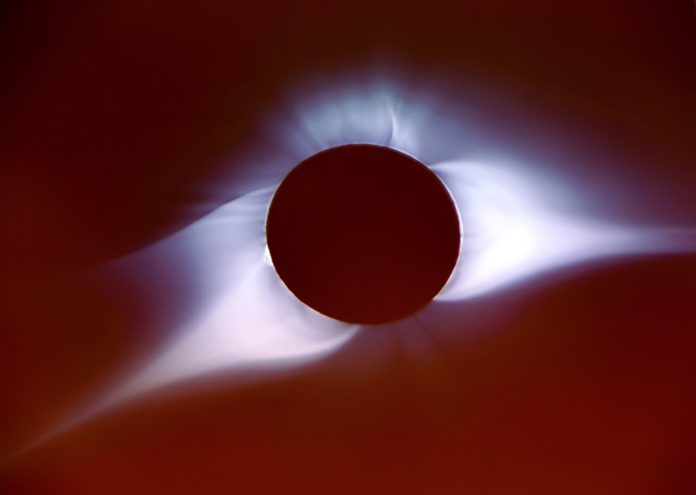
The solar corona, or the outer atmosphere of the sun, has puzzled scientists for decades. Despite being farther from the sun’s core, the corona is much hotter than the sun’s surface.
A new study published in The Astrophysical Journal by Syed Ayaz, a graduate research assistant at The University of Alabama in Huntsville (UAH), offers fresh insights into this mystery.
Ayaz’s research focuses on kinetic Alfvén waves (KAWs) and their role in heating the solar corona.
Ayaz, part of the UAH Center for Space Plasma and Aeronomic Research (CSPAR), explored how KAWs might be responsible for the high temperatures in the corona.
“For years, Alfvén waves have been seen as the best candidates for moving energy from one place to another,” Ayaz explains. His study examines how the energy carried by KAWs transforms into heat as these waves interact with particles in space.
The corona is an expansive and extremely hot region extending about 8 million kilometers above the sun’s surface.
While the sun’s surface temperature is around 6,500 degrees Celsius, the corona can reach over 1 million degrees Celsius. This stark difference has intrigued scientists for nearly seventy years.
Ayaz’s work delves into how KAWs, which are common throughout the plasma universe, might explain this phenomenon.
These waves are formed by movements in the sun’s outer shell, known as the photosphere, which emits visible light. His interest in KAWs was sparked by the Parker Solar Probe and Solar Orbiter missions, which raised questions about how the corona gets so hot.
“Spacecraft missions haven’t yet provided clear predictions about these phenomena close to the sun,” Ayaz says.
His study focuses on KAWs within the 0–10 solar radii range of the corona. KAWs can transfer energy effectively, which is crucial for understanding how energy moves between electromagnetic fields and plasma particles in space.
One key mechanism Ayaz investigated is Landau damping, where particles moving at similar speeds to the wave’s phase velocity interact with the wave, either gaining or losing energy.
This interaction causes the wave to either give its energy to the particles or take energy from them. The study found that KAWs dissipate quickly, transferring their energy to plasma particles, leading to heating.
Dr. Gary Zank, CSPAR director, emphasizes the importance of Ayaz’s work. “We still don’t fully understand why the sun’s atmosphere is so much hotter than its surface. Syed’s research provides crucial insights into how energy in a magnetic field heats a plasma, which is key to solving this mystery.”
This research helps explain the significant role of KAWs in heating the solar corona, bringing us closer to understanding one of heliophysics’ oldest puzzles.
The study’s findings not only advance our knowledge of the sun but also have practical applications in understanding similar processes in other plasma environments.



